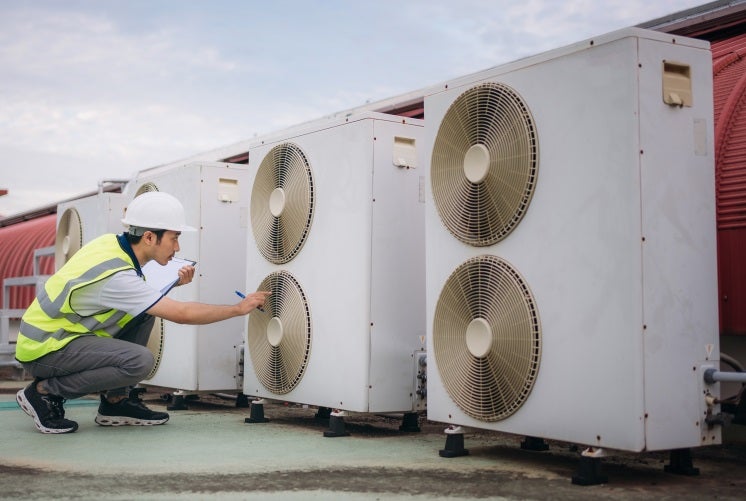Heat pumps, versatile devices that transfer heat between indoor and outdoor spaces, come in various types, including air-source, ground-source, and water-source systems. Each type is designed to provide efficient heating and cooling for homes and buildings in different climates and applications. These systems can be 3-5 times more energy efficient than traditional gas boilers, making them an increasingly popular choice for both residential and industrial use.
Cold Climate Heat Pumps
Cold climate heat pumps are specifically designed to operate efficiently in regions with harsh winters, maintaining performance even when outdoor temperatures drop well below freezing. These systems typically feature variable-speed compressors and advanced defrosting technology to prevent ice buildup on outdoor coils. Some key characteristics of cold climate heat pumps include:
- Ability to maintain full heating capacity at temperatures as low as 5°F (-15°C)
- Operational range extending to -13°F (-25°C) or lower
- Higher HSPF (Heating Seasonal Performance Factor) ratings, typically between 9 and 11.5
- Use of inverter-driven compressors for improved efficiency and performance
- Some models can provide 75-95% of their rated heating capacity at 5°F (-15°C)
Leading manufacturers of cold climate heat pumps include Mitsubishi, Fujitsu, and Daikin. These advanced systems are making heat pump technology increasingly viable for widespread adoption in colder regions, offering energy-efficient alternatives to traditional heating methods.
Hybrid Heat Pump Systems
Hybrid heat pump systems, also known as dual-fuel systems, combine an electric heat pump with a gas furnace to optimize energy efficiency and comfort in varying climate conditions. These systems automatically switch between the heat pump and furnace based on outdoor temperatures, typically using the heat pump for cooling and moderate heating (above 40°F) and the gas furnace for colder temperatures.
Key features of hybrid heat pump systems include:
- Increased energy efficiency, potentially saving homeowners money on utility bills
- Flexibility to use the most cost-effective energy source based on current prices
- Improved performance in colder climates compared to standard heat pumps
- Longer system lifespan due to reduced wear on individual components
- Reduced environmental impact by utilizing electricity for heating when possible
Hybrid systems are particularly well-suited for regions with varied seasonal temperatures, offering a balance between the efficiency of heat pumps and the powerful heating capabilities of gas furnaces.
Air-to-Water Heat Pumps
Air-to-water heat pumps extract heat from outdoor air and transfer it to a water-based heating system, providing efficient space heating and domestic hot water. These systems are particularly well-suited for homes with existing hydronic distribution systems or radiant floor heating.
Key features of air-to-water heat pumps include:
- Can provide total heating, cooling, and hot water solutions for homes
- More efficient than traditional air-source heat pumps, with energy savings up to 47% compared to high-efficiency gas condensing boilers
- Operate effectively in cold climates, with some models functioning at temperatures as low as -20°F
- Deliver water temperatures between 42-130°F, suitable for various heating applications
While widely adopted in Europe and Asia, air-to-water heat pumps are an emerging technology in the United States, with manufacturers introducing new models to meet growing demand for efficient, low-carbon heating solutions.
Dual-Fuel Heat Pump Integration
Dual-fuel heat pump integration combines the efficiency of an electric heat pump with the power of a gas furnace to create a versatile and energy-efficient heating system. This approach allows homeowners to maximize comfort while minimizing energy costs across varying temperature ranges.
The system operates by seamlessly switching between the heat pump and furnace based on outdoor temperatures and energy prices. Typically, the heat pump handles heating duties when temperatures are between 40°F and 60°F (4.4°C to 15.6°C). When temperatures drop below 40°F (4.4°C), the gas furnace takes over, providing more powerful heating capability in colder conditions.
Advantages of dual-fuel systems include:
- Adaptability to fluctuating energy prices, choosing the most cost-effective fuel source based on current rates
- Environmental benefits, with reduced fossil fuel usage and carbon emissions, potentially decreasing emissions by about 10% compared to a furnace-only application
- Easier retrofitting with existing HVAC systems due to advancements in control technology
- Extended system lifespan of 20 to 25 years due to reduced wear on each component
As energy codes and regulations continue to emphasize efficiency and reduced emissions, dual-fuel systems are likely to play an increasingly important role in residential heating strategies.
Geothermal Heat Pump Efficiency
Geothermal heat pumps (GHPs) are renowned for their exceptional energy efficiency, significantly outperforming traditional heating and cooling systems. These systems leverage the relatively constant temperature of the earth to provide heating, cooling, and often hot water for buildings, resulting in remarkable efficiency ratings.
The efficiency of geothermal heat pumps is typically measured using two key metrics: the Coefficient of Performance (COP) for heating and the Energy Efficiency Ratio (EER) for cooling. GHPs generally achieve COPs ranging from 3 to 5, meaning they produce 3 to 5 units of heat energy for every unit of electrical energy consumed. This translates to an efficiency of 300% to 500%, far surpassing the maximum efficiency of around 90% achievable by the most advanced gas furnaces.
For cooling, geothermal systems commonly attain EER ratings between 13 and 18, with some high-performance models reaching up to 30. These figures demonstrate the superior efficiency of GHPs compared to conventional air conditioning systems.
The U.S. Department of Energy reports that geothermal heat pumps can reduce energy consumption by approximately 25% to 50% compared to air-source heat pump systems. This significant energy savings translates to lower utility bills for homeowners, with potential reductions of up to two-thirds compared to direct electric heating.
Geothermal systems maintain their high efficiency even in extreme weather conditions. Unlike air-source heat pumps, which can struggle in very cold temperatures, GHPs can operate at peak efficiency regardless of outdoor air temperature, as they draw heat from the stable ground temperature.
The efficiency of geothermal heat pumps also contributes to their long-term cost-effectiveness. Despite higher initial installation costs, the energy savings can typically recoup the additional investment within 5 to 10 years. Over their lifespan, which can extend to 20-25 years for the heat pump itself and 25-50 years for the ground loop system, GHPs can save homeowners between $10,000 and $15,000 in energy costs.
As the world moves towards more sustainable energy solutions, the high efficiency of geothermal heat pumps positions them as a key technology in reducing building energy consumption and associated greenhouse gas emissions.
Summary of Heat Pump Types
Heat pumps are energy-efficient devices that transfer heat between indoor and outdoor environments. There are several types of heat pumps, each suited for different applications and climates:
- Cold Climate Heat Pumps: Designed for regions with harsh winters, these systems maintain efficiency even at temperatures as low as -13°F (-25°C). They use advanced defrosting technology and inverter-driven compressors for optimal performance in freezing conditions.
- Hybrid Heat Pump Systems: Also known as dual-fuel systems, these combine an electric heat pump with a gas furnace. They switch between the two depending on the outdoor temperature, offering increased energy efficiency and flexibility, particularly in regions with varying seasonal temperatures.
- Air-to-Water Heat Pumps: These systems transfer heat from outdoor air to a water-based system, making them ideal for homes with radiant floor heating. They are more efficient than traditional air-source heat pumps and work well in cold climates.
- Dual-Fuel Heat Pump Integration: This system combines a heat pump and a gas furnace, automatically switching between them for optimal efficiency and cost-effectiveness based on temperature and energy prices. It offers environmental benefits and extended system lifespan.
- Geothermal Heat Pumps (GHPs): Known for their exceptional efficiency, GHPs utilize the stable temperature of the earth for heating and cooling. They operate efficiently in all weather conditions and offer long-term energy savings despite higher installation costs.
Each type of heat pump offers unique benefits, from energy savings to environmental impact, making them a versatile option for both residential and industrial use.








